
Photo by PhotoSunny | Shutterstock
We flower arrangers and gardeners know that any bouquet appears more gardenesque with foliage integrated into the arrangement. It simply seems more natural to retain a flower’s foliage or use it in some way rather than discard it. I often make rose arrangements in a floral foam ring and use the foliage of the roses as a filler. It’s a little tedious and time consuming to put the leaves into picks and incorporate them into the arrangement, but the effect is more desirable.
The English flower arranger and garden designer Sheila Macqueen was renowned for her use of foliage in creating her masterpieces. The English garden designer Rosemary Verey used foliage to great effect in her designs, including the potager at her home, Barnsley House.

Photo by Joyelle West
Leucothoe
(leathery leaves, evergreen, bronze-tinted in winter)
“I like leucothoe foliage because of the shape and distribution of the leaves on the stem.”—Kaylyn Hewitt of True Vine
See the Completed Arrangement
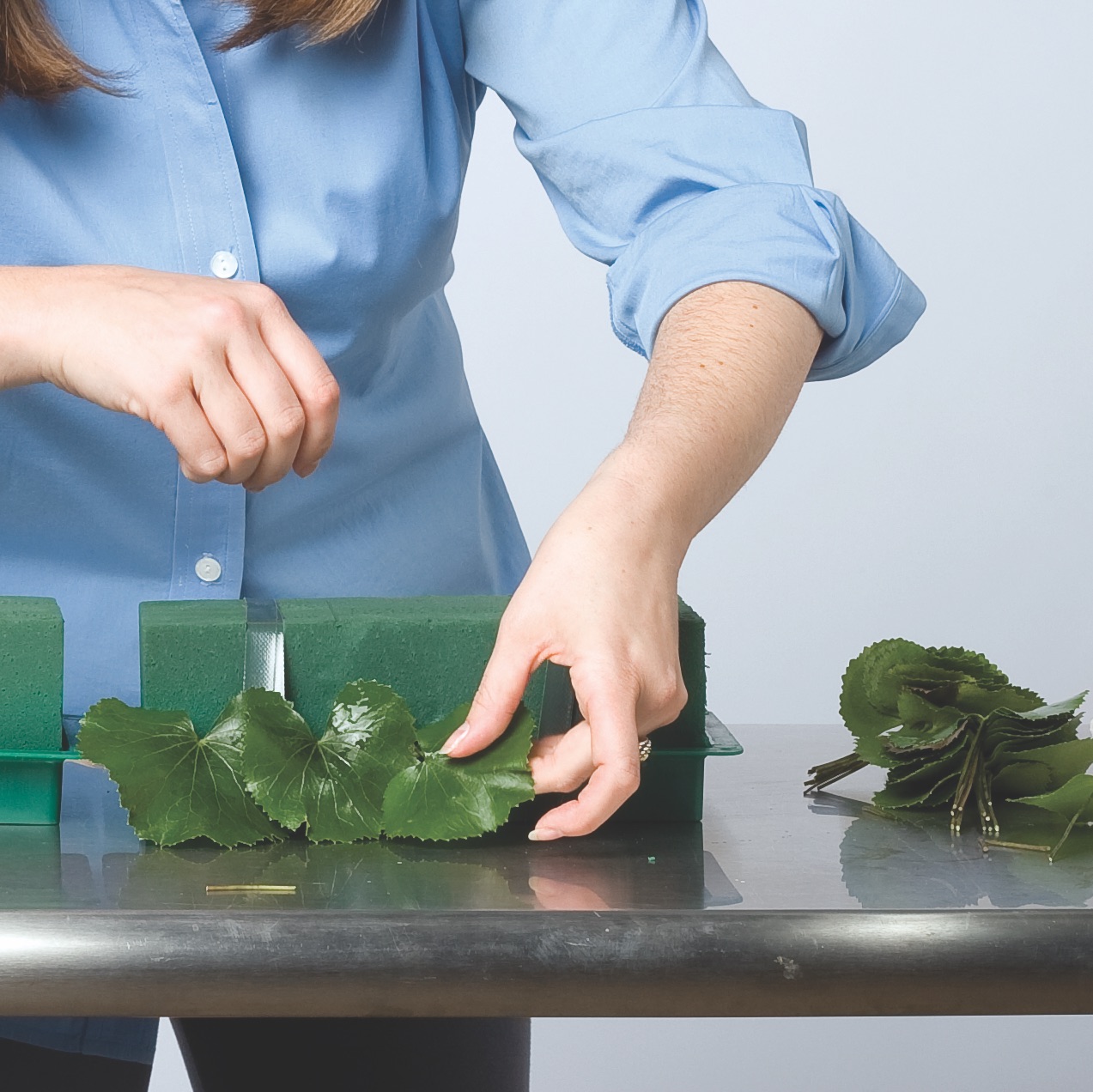
Photo by Jason Wallis
Galax
(long-lasting, glossy, heart-shaped with serrated edges)
See the Completed Arrangement

Photo by Karla Pound
Calathea Leaves
(tropical, large, green and white stripes, contrasting purple undersides)
See the Completed Arrangement

Photo by Jessica Sample
Scented Geranium
(fuzzy texture, fragrant, multi-lobed leaves)
See the Completed Arrangement
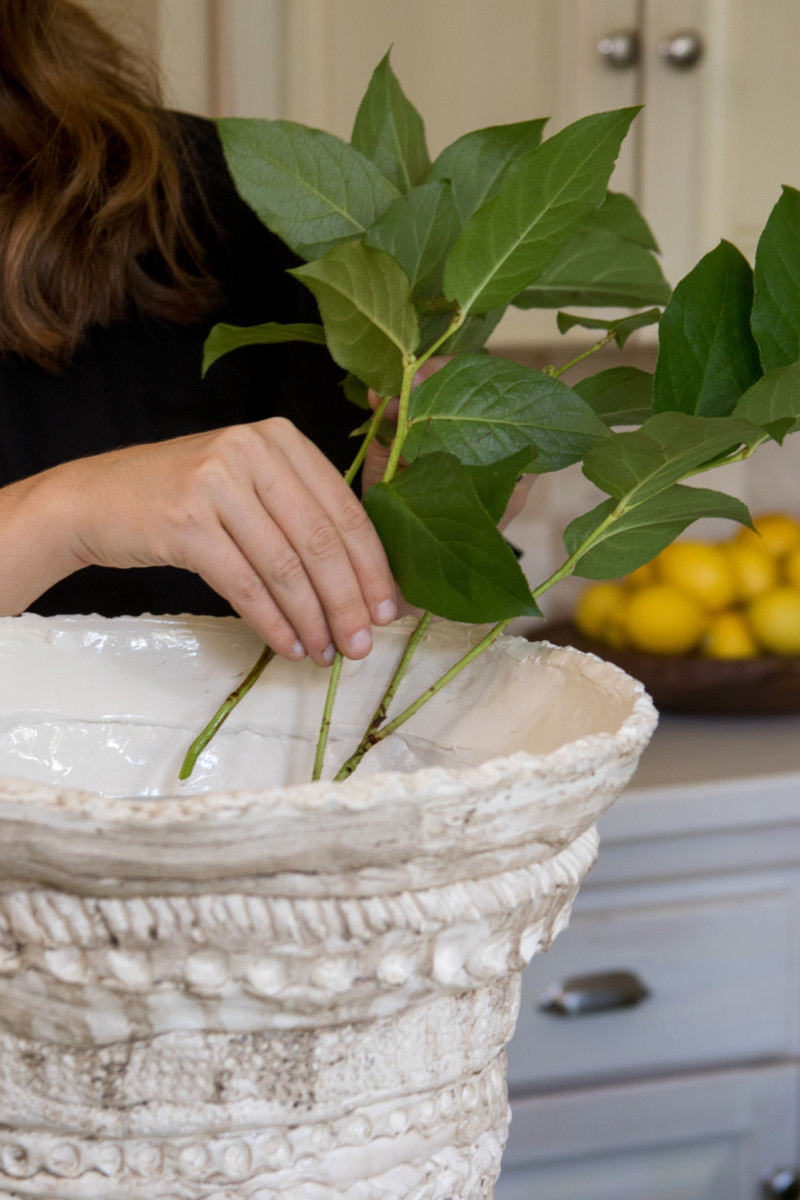
Photo by Eugenia Uhl
Salal lemon Leaf
(long-lasting, evergreen, leathery appearance)
See the Completed Arrangement

Photo by Becky Luigart-Stayner
Dusty Miller
(soft and velvety texture, silver leaves)
See the Completed Arrangement
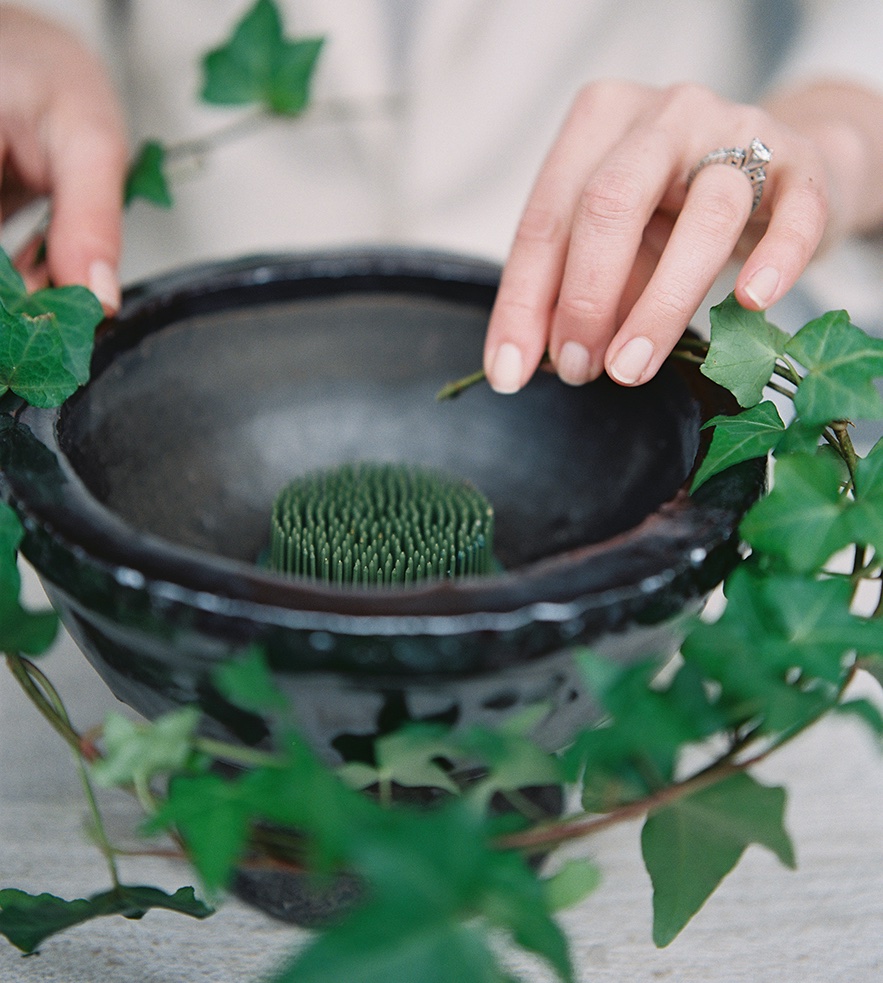
Photo by Heather Payne
Ivy
(long-lasting, green leaves with three to five points, woody stems, trailing and cascading)
See the Completed Arrangement

Photo by Refat | Shutterstock
Eucalyptus
(leathery leaves can have a silver cast, long-lasting, fragrant)
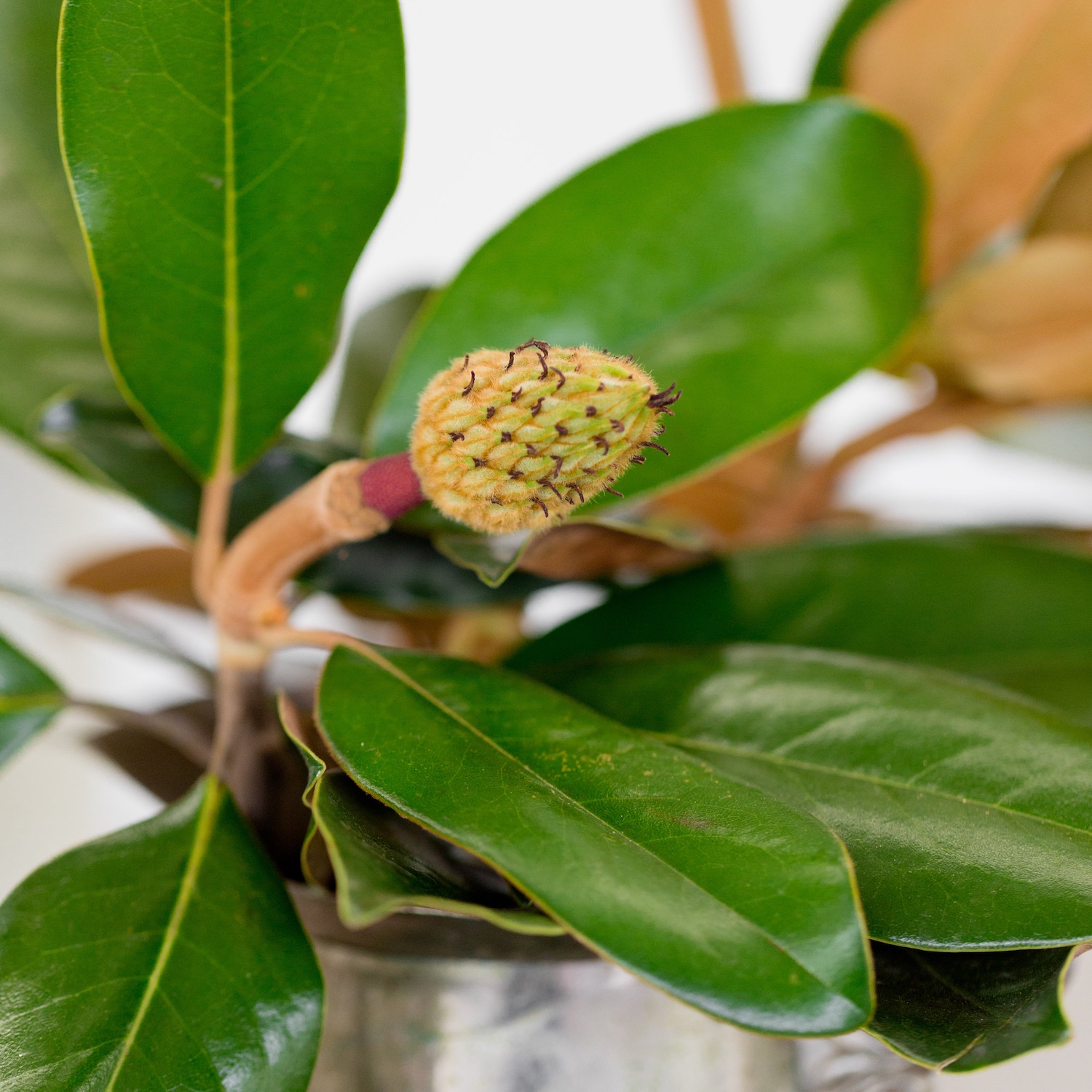
Magnolia
(glossy leaves, fuzzy textured underside, sturdy branches, long-lasting)
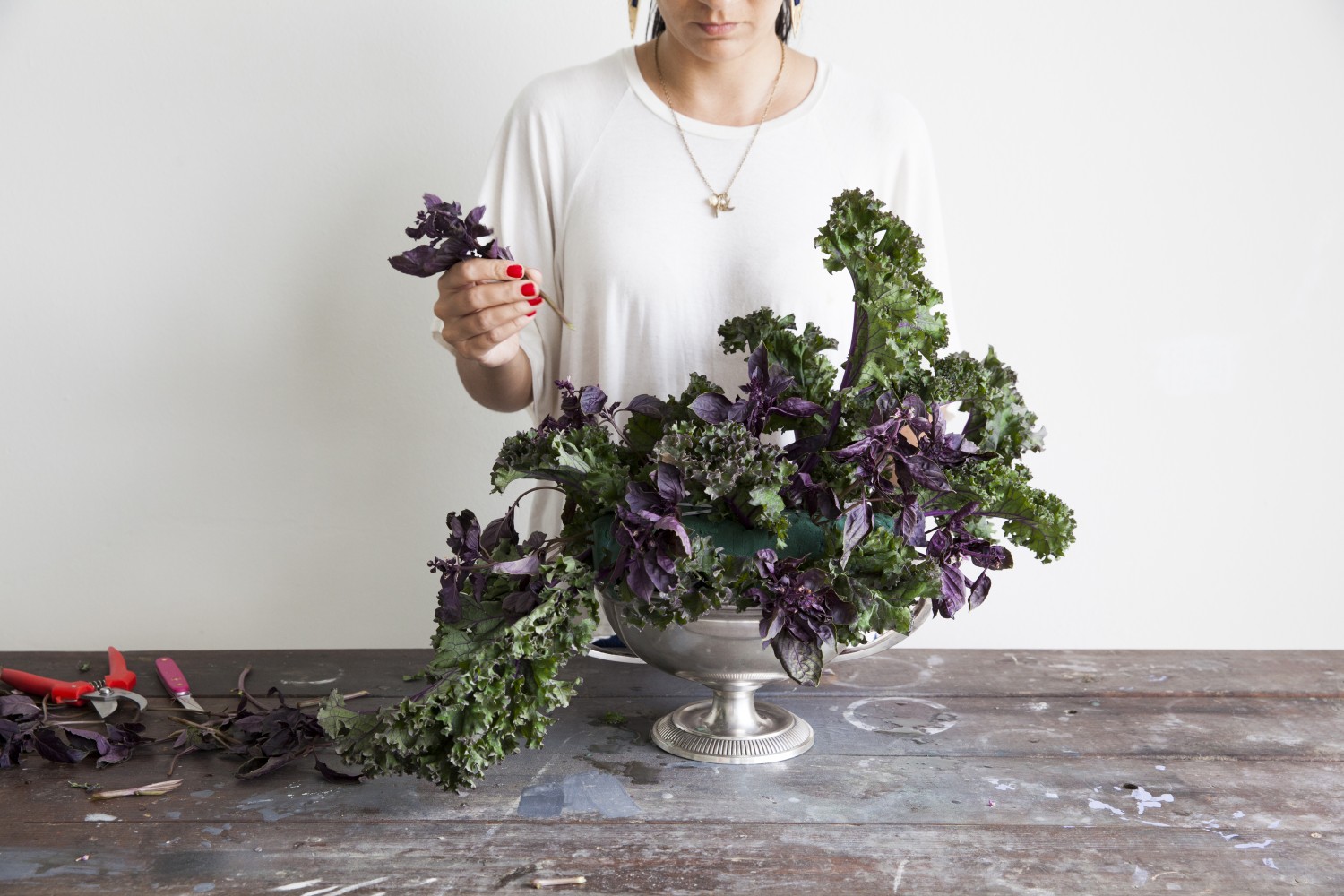
Photo by Julie Soefer
Kale
(ruffled leaves, green or boldly colored and can have contrasting veins (purple kale seen here))
See the Completed Arrangement

Photo by Brooke Slezak
Camellia Branches
(evergreen, small glossy green leaves, sturdy stems)
See the Completed Arrangement

Photo by Brooke Slezak
Ferns
(varied textures, leaves may be leathery or feather-like, fronds range from spear-shaped to delicate and airy)
See the Completed Arrangement

Photo by Eugenia Uhl
Gardenia
(long-lasting, dark green glossy leaves, evergreen)
See the Completed Arrangement

Photo by Jessica Sample
Mint
(bright green, fuzzy textured leaves, fragrant)
See the Completed Arrangement

Photo by Karla Pound
Monstera
(tropical, long-lasting, large leaves with a striking form)
See the Completed Arrangement

Variegated Pittosporum
glossy oval leaves with white-streaked margins, evergreen, long straight stems)
Unexpected Foliage
I once created an ornamental potager for the Nashville Antiques and Garden Show in Verey’s memory. The centerpiece of the garden was a magenta urn filled with dozens of beautiful apricot ‘Avignon’ tulips. The filler for the arrangement was dusky purple cabbage, pale- and dark-green leaves of bok choy, and bright yellow and red stems of Swiss chard—most unusual, but most appropriate. I knew the plants would not last for days, but they were sensational for a one-night stand.
Beyond Green Leaves
Chlorophyll is the green pigment found in all plants, but many plants have colored pigments that are masked for at least part of the year by chlorophyll. Those other pigments provide us with an array of colored foliage that is most evident in early spring growth and in the fall as the chlorophyll waxes and wanes. For spring and fall arrangements, this beautifully colored foliage is essential. I often walk through my garden in these seasons and find myself inspired to make arrangements of foliage alone.
The genus Cotinus, commonly called smoke tree, has varieties with golden, plum, and purple foliage. In the heat of summer, they all become more green, but in the spring, they are as beautiful as any flower. Japanese maples provide another source of color with their array of reds, bronzes, and purples
My golden-edged elaeagnus and golden euonymus are evergreen and provide colored foliage year-round, but they are especially useful to me during the Yuletide season. Many golden and variegated hollies and conifers become more available during that season as well, and I find them essential for embellishing garlands and wreaths.
Fragrant Foliage
Foliage provides more than color and texture for a bouquet. It is also a source of fragrance. When invited out, I often walk through my garden picking sprigs of flowers to make a tussie-mussie for my hostess. I keep several pots of scented geraniums in my glass house and use the leaves to make an aromatic collar for these delightful bouquets. Sprigs of rosemary, lemon balm, and other herbs are equally useful to enhance a gathering of flowers.
By Ryan Gainey | Additional reporting by Jason Burnett
The late garden designer and author Ryan Gainey wrote a regular column in Flower for many years, sharing his remarkable gardening knowledge and stories.




